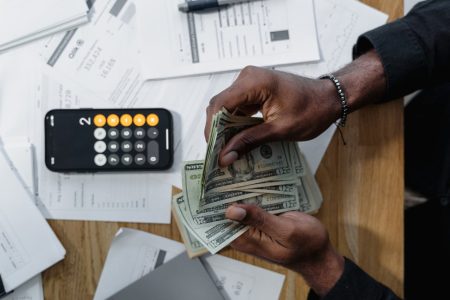Do you struggle keeping a “safe” amount of money in your bank account? A safe amount of money is a number that covers daily expenses, monthly bills and unforeseen expenses, such as a lost job, medical bills or a malfunctioning car. If you consistently see a number in your bank account that leaves you feeling fraught with worry, it might be more than money that’s lacking.
Strong Versus Weak Mindset
A strong mindset resists the urge to go to a fancy dinner with friends when it isn’t in the budget. It sees a new clothing/jewelry/shoes/video game release and resists the urge to buy it just because it’s new and exciting. A strong mindset knows how important giving up short-term happiness is for long-term security, and in turn, happiness.
A weak mindset is one that ebbs and flows with emotion. According to the 2011 Stress in America survey, 27 percent of participants said lack of willpower was their biggest barrier to change. A weak mindset creates a budget and feels confident that can stick to it. But often, they have unrealistic expectations about their own willpower and need to address their mindset before they address their budgeting plan.
What To Do about a weak Bank Account
Cultivating a strong mindset is nearly like anything—it requires consistent practice and discipline, just like working a muscle. Start by creating a spending log. It can be a small blank notebook you keep in your pocket or purse. Force yourself to track every expense, big and small. This includes everything from a pack of gum to a $200 clothing purchase. Create a sense of accountability by forcing yourself to write down everything. At the end of a month, see where your biggest weaknesses lie—if it’s clothing, avoid the mall the next month; if it’s food and going out with friends, be honest with them. Tell them about your financial goals and enlist their support in your journey.
Next, make a list of your financial goals. Whether that’s a savings account balance goal or a debt elimination goal—post it somewhere you can see it every day as a reminder of your long-term goals. Every time you’re tempted to buy that new outfit, remember your goals.
Finally, you need to be realistic about your goals. Don’t expect your spending habits to change overnight. Just like you won’t lose that stubborn weight in two gym visits, you won’t suddenly resist your financial urges after three days. Give yourself small financial goals. For example, eliminate your morning Starbucks run and make coffee at home. Celebrate by having Starbucks once a week. If you cut it cold turkey, you might have more trouble sticking to your guns and avoiding that morning latte run. By slowly decreasing, you allow yourself to slowly build your resistance muscle.
The truth is it’s easy to say, “If I made more money, this wouldn’t be a problem.” But often that’s only a negligible portion of the problem. First you need to address your relationship with money, find your weaknesses and eliminate them one by one.















